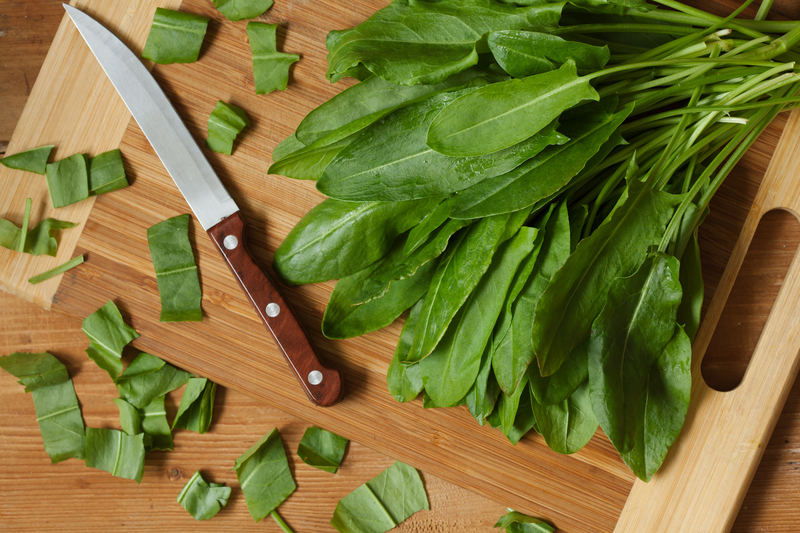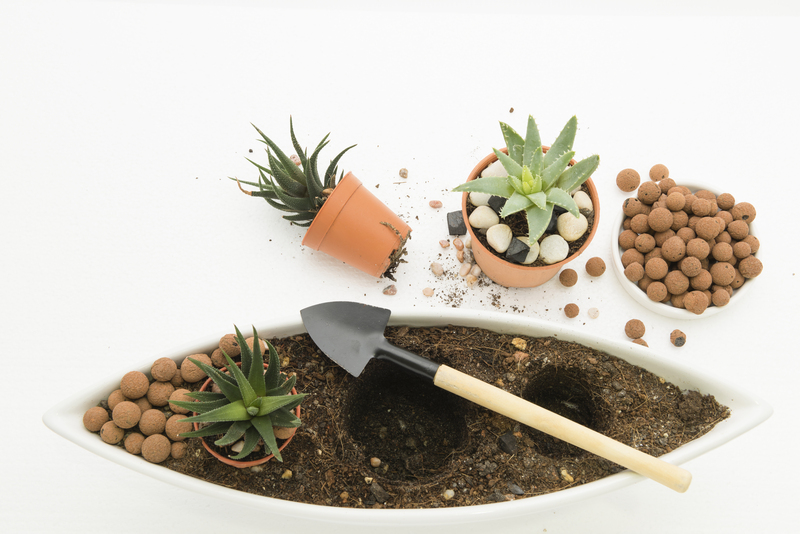Exploring Native Plants for Sustainable Window Boxes
If you're seeking to combine beauty, biodiversity, and eco-friendliness, exploring native plants for sustainable window boxes is an excellent way to start. Not only do native plants thrive with less maintenance, but they also support local wildlife and are more resistant to local pests and diseases. In this comprehensive guide, we'll delve into the advantages of using native species in window box gardening, how to select the right plants, and tips for designing a vibrant, sustainable display.

Why Choose Native Plants for Your Window Boxes?
Native plants are species that have evolved over thousands of years in a specific region. When you opt for native plants in your sustainable window box arrangements, you enjoy a host of environmental and practical benefits:
- Low Maintenance: Native species usually demand less water, fertilizer, and care compared to exotic varieties.
- Eco-friendly: They require fewer chemical interventions, helping to reduce pollution and support a healthier ecosystem.
- Wildlife Support: Native plants attract and support local pollinators such as bees, butterflies, and birds.
- Resilience: These plants adapt better to local climate, making them more resistant to pests, drought, and diseases.
- Biodiversity: Incorporating regional flora encourages greater biodiversity in urban settings.
With these advantages, incorporating native plants into your window boxes aligns beautifully with sustainable, environmentally-conscious gardening practices.
Assessing Your Window Box Conditions
Before selecting native plant varieties for sustainable window boxes, consider the following parameters:
- Sun Exposure: Is the window box in full sun, partial shade, or shade?
- Size and Depth: How deep is your container? Some natives have deep roots, while others require only a shallow bed.
- Drainage: Proper drainage is vital for plant health. Use containers with holes and a quality, well-draining soil mix.
- Maintenance: How much time can you dedicate to upkeep? Most native plants are forgiving, but some still require occasional deadheading or pruning.
Top Native Plants for Sustainable Window Boxes
Let's take a closer look at excellent native plant options for window boxes, covering a range of conditions and regions. These suggestions are adaptable for various climates; however, always check with your local extension office or nursery for the best regional matches.
Sun-Loving Native Plants
- Black-Eyed Susan (Rudbeckia hirta): This cheerful yellow flower thrives in full sun and blooms from summer to fall, attracting pollinators and requiring minimal care.
- Wild Petunia (Ruellia humilis): Providing lavender-blue flowers, wild petunia is drought-tolerant and perfect for small window boxes.
- Blanket Flower (Gaillardia pulchella): A vibrant choice with red and yellow blooms, this native plant withstands heat and dry conditions well.
- Purple Coneflower (Echinacea purpurea): Noted for its striking purple petals, coneflower is both hardy and beloved by butterflies.
- Butterfly Milkweed (Asclepias tuberosa): These orange blooms support monarch butterflies and add unique color to container displays.
Shade-Tolerant Native Plants
- Wild Ginger (Asarum canadense): With heart-shaped leaves and a low growth habit, this plant does well in deep shade and enriches the mix with unusual foliage.
- Foamflower (Tiarella cordifolia): Its frothy, star-shaped blossoms brighten up the shade and create a lush backdrop.
- Virginia Bluebells (Mertensia virginica): These bell-shaped blue flowers emerge in early spring, perfect for partially shaded window boxes.
- Heuchera (Coral Bells): Known for their colorful, ruffled foliage, coral bells add texture and visual interest, thriving in both sun and partial shade.
- Columbine (Aquilegia canadensis): Delicate, nodding blooms in red and yellow attract hummingbirds and tolerate shade.
Drought-Tolerant Natives
- Prairie Dropseed (Sporobolus heterolepis): This ornamental grass is low-growing, fragrant, and drought-tolerant--great for low-water window displays.
- Little Bluestem (Schizachyrium scoparium): Featuring bluish-green stalks that turn copper in fall, this native grass provides year-round interest.
- Lavender Hyssop (Agastache foeniculum): Aromatic leaves and purple spikes attract bees and withstand periods of dryness.
- Wild Lupine (Lupinus perennis): Spikes of blue or purple flowers bring color and resilience to dry sites.
Edible Native Plants for Window Boxes
- Wild Strawberry (Fragaria virginiana): Produces tiny, sweet berries and white flowers, perfect for both visual appeal and snacking.
- Wood Sorrel (Oxalis montana): Its clover-like leaves and yellow blossoms are edible in small amounts and add unique charm.
- Wild Leek (Ramps, Allium tricoccum): Adds both beauty and culinary value, thriving in moist, shady boxes.
Designing Sustainable Native Window Boxes
Now that you've discovered a variety of native plants for sustainable window boxes, it's time to design a box that is:
- Visually Dynamic
- Low-impact
- Wildlife-friendly
Layering for Visual Interest
Incorporate layers, textures, and color contrasts for an eye-catching arrangement:
- Thrillers: Tall, focal-point natives like coneflower or little bluestem at the back (or center).
- Fillers: Medium-height species like wild petunia or foamflower fill the midsection.
- Spillers: Cascading options like wild strawberry or wild ginger soften box edges and add depth.
Maximizing Sustainability
- Choose Peat-Free Soil: Peat extraction harms habitats; opt for eco-friendly mixes instead.
- Water Wisely: Install self-watering liners or mulch the surface to retain moisture and reduce watering frequency.
- Use Organic Fertilizers: Organic compost or worm castings are gentle and support sustained growth without harming soil microbes.
- Repurpose or Recycle Boxes: Choose wooden window boxes made from reclaimed or FSC-certified materials, or recycle old containers for a second life.
- Companion Planting: Pair species that support each other, such as those that repel pests or provide living mulch, like pairing foamflower with wild ginger.
Encouraging Pollinators and Beneficial Insects
Native window box plants offer food and nectar for local insects, butterflies, and hummingbirds. To amplify their value:
- Choose a variety of bloom times to provide resources throughout the growing season.
- Include plants with open flowers for easy access by pollinators.
- Avoid pesticides, which harm both pests and beneficial species.
Regional Recommendations for Native Window Box Plants
Native plants differ widely by region. Here are example plant combinations for various areas of North America--check local sources for those native to your own climate:
- Northeast: Black-eyed Susan, wild strawberry, foamflower, wild columbine
- Southeast: Butterfly milkweed, blanket flower, Virginia bluebells, coral bells
- Midwest: Purple coneflower, prairie dropseed, wild lupine, little bluestem
- West Coast: California poppy, Douglas aster, yarrow, seaside daisy
- Mountain West: Penstemon, blanket flower, rabbitbrush, Lewis flax
Practical Tips for Native Plant Window Boxes
- Start with Smaller Plants: Young plugs or small pots have better transplant success and will adapt readily.
- Mulch: Apply a thin layer of organic mulch to retain moisture and suppress weeds.
- Monitor Watering: Even low-maintenance natives need regular watering until established.
- Deadhead Spent Blooms: Remove faded flowers to encourage longer blooming and prevent unwanted self-seeding.
- Inspect Regularly: Check for signs of drought stress or pests, addressing problems promptly with organic methods.
- Rotate Plantings: Consider changing some plants seasonally to keep boxes looking fresh and to match the needs of different pollinators.

Common Misconceptions About Native Plants in Window Boxes
- "Native plants are messy or unattractive." On the contrary, many native species offer striking colors and forms, especially when thoughtfully combined.
- "Native plants are only for wild gardens." Many natives are well-suited to containers and can shine in structured, stylish window box designs.
- "Native window boxes can't be highlighted in sun or shade." There are native species adapted to every light condition, making them highly versatile.
Conclusion: Flourishing with Native, Sustainable Window Boxes
By exploring native plants for sustainable window boxes, you not only add lasting color and texture to your home but also positively impact the local environment. Native plant window boxes require less water and maintenance, support local wildlife, and help preserve the natural heritage of your region.
Whether you're an experienced gardener or a green-thumbed beginner, selecting beautiful, hardy natives is a rewarding step toward a greener, more sustainable home. Begin your journey today by visiting a trusted local nursery or speaking with your extension service about the best native plants for your window box. Let nature inspire your next window display!


